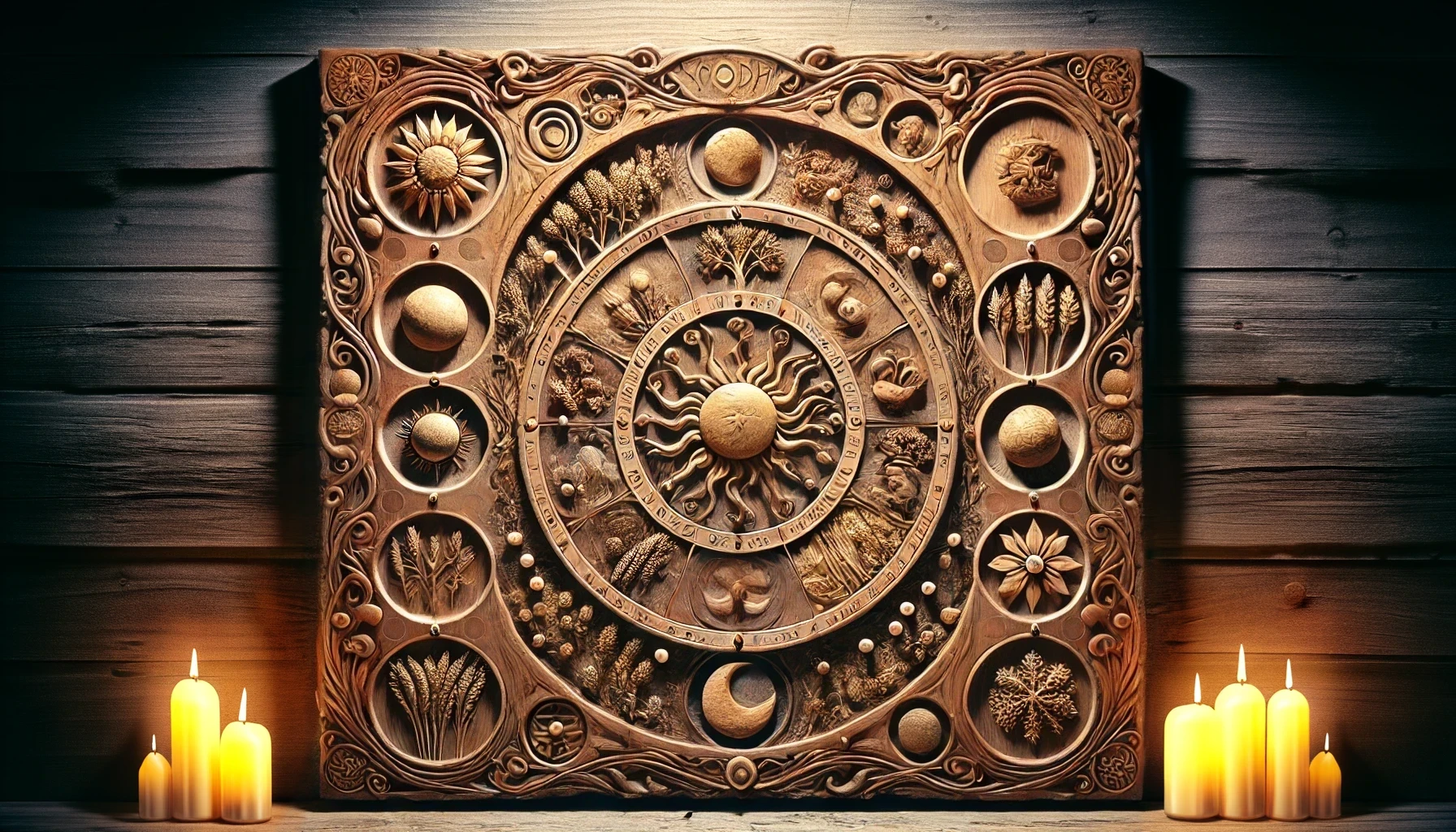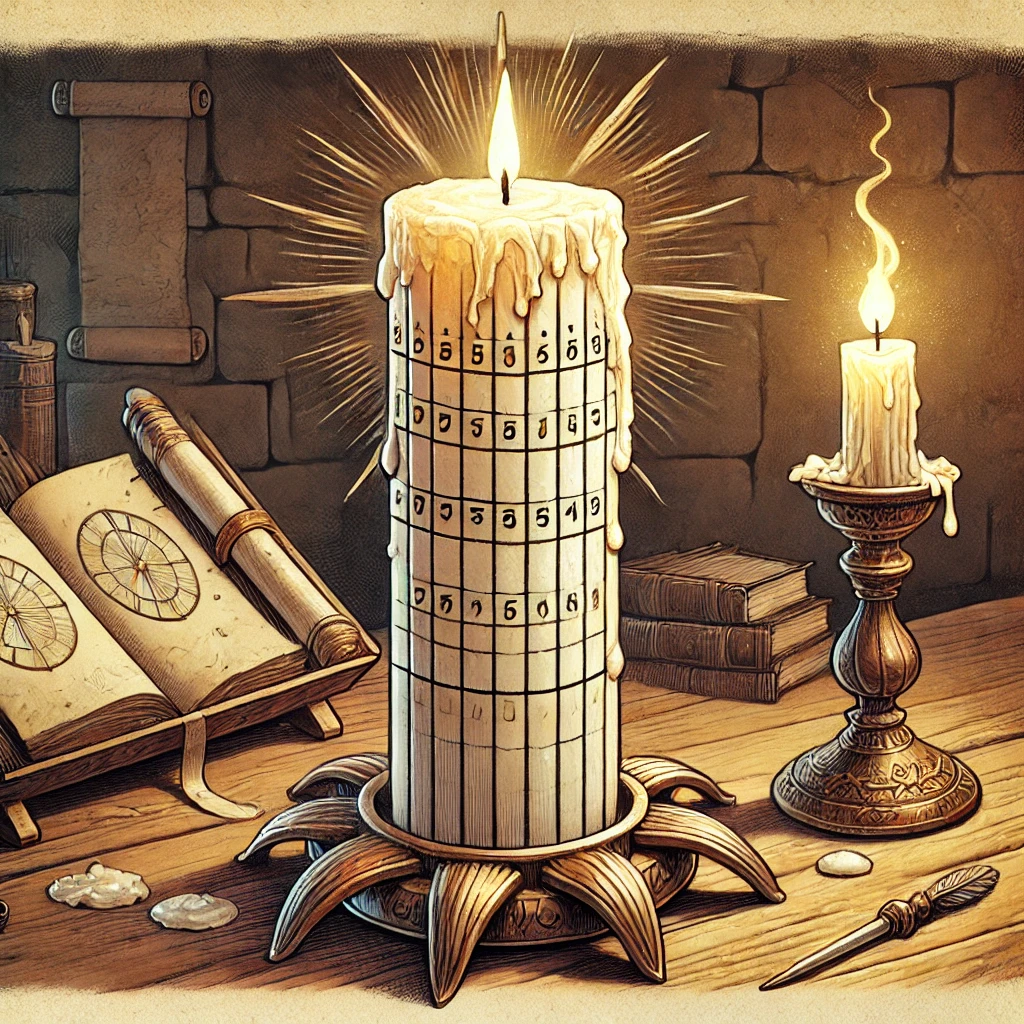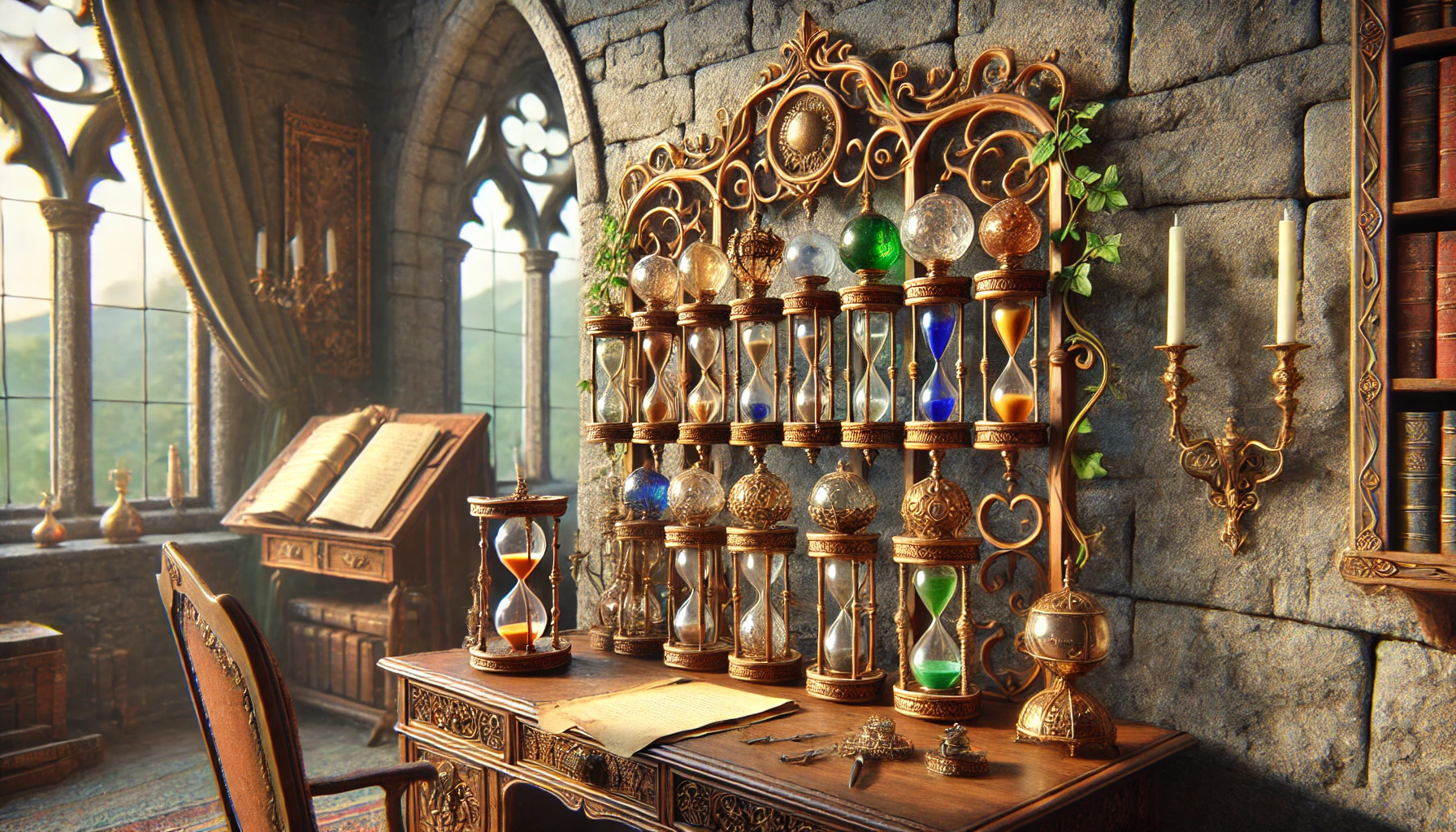The Measure of Days
Days, Months and Years
A calendar year in Elysoria is composed of 12 months, each with exactly 30 days, and divided into weeks of 7 days.
Days of the week
- Moonsday: Night festivals and celebrations are common. Best day for nighttime ventures.
- Tidesday: Travelers and sailors often choose to start their voyages on this day.
- Wendsday: Derived from 'Wend,' an old term for change or transition. This day is associated with decisions, particularly those involving significant life changes, weddings, important contracts and meetings.
- Thursday: Originally ‘Thurse’s Day,’ named after a mythical giant known for his strength and labor. A day of labor; many communities hold communal work events to tackle large projects, believing the spirit of Thurse gives them strength
- Freesday: Celebrates freedom and joy. Festivals, dances and street performance. Day for personal exploration and expression.
- Saturnday: Named after 'Saturn,' an ancient word for ample or bountiful. This day is traditionally a time for markets, fairs and communal gatherings.
- Sunsday: Believed to be the day when the sun was first created by the ancient sky architects. It is considered a day of beginnings and important undertakings.
Months of the year
- Daghda's Dawn: Named to honor Daghda, the creator and Sky Father. This first month marks the beginning of the year and is associated with creation myths and renewal festivals.
- Greenwaken: Marks the awakening of greenery, as the dormant world begins to stir with life once more. This month is characterized by the first buds and sprouts, symbolizing hope and renewal.
- Springtide: Represents the full arrival of spring, with days becoming noticeably longer and warmer. It’s a time of preparation for planting and a celebration of water’s life-giving flow as snows melt and streams swell.
- Sowmoon: Reflects the time for sowing seeds. This month is crucial for farmers preparing for the growing season, symbolizing new beginnings and hopes.
- Belen's Blaze: Named after Belenus, the sun god. This month is characterized by longer days and is celebrated with festivals of light and fire, marking the sun’s power reaching its peak.
- Blossomwind: Represents the time when flowers bloom and breezes are sweet and mild. It's a month of natural beauty and is celebrated with floral displays and nature appreciation.
- Highsun: Denotes the height of summer, a month of warmth and bountiful light, ideal for growth and vitality in nature.
- Harvestide: Marks the beginning of the harvest season. Communities come together to reap the first crops, and festivals celebrating bounty and community are common.
- Leafall: As the leaves begin to turn and fall, this month is a time of change, preparing for the end of the growing season and the onset of cooler weather.
- Arian's Glow: Dedicated to Arianrhod, the moon goddess. This month is filled with celebrations of the moon, including night festivals illuminated by lanterns and moonlight.
- Longnight: Characterized by the shortening days and lengthening nights, a time for gathering indoors and sharing stories and warmth.
- Yearsend: The final month, dedicated to closing out the year. It is a time of reflection, celebration, and festivals that honor the past year's achievements and the anticipation of the new cycle to begin.
Year: 1614
Landfall on the New Continent - 1614 years ago
This marks the beginning of a new chapter for humanity in your world, escaping a devastating plague and establishing themselves in a new land. This "Year 0" is symbolic of survival, resilience, and the start of a significant new era in human history. It represents a clean break from the past and the hardships of the old world, focusing on renewal and hope.
Timekeeping in Elysoria
Sunposts and ShadowringsSimple stone pillars with etched rings mark the passing of hours based on the sun’s position. Found in town centers, temples, and waystations. Some larger ones even chime by funneling wind through hidden reeds. The Flowglass
A sand- or water-based timeglass used for short measurements—cooking, speeches, and meditations. Most last between a quarter-hour and an hour. Nobles might own elegant multi-glass racks for ceremonial use. Candlemarks
Specially made candles are marked with lines that burn away at regular intervals. Often used indoors or on cloudy days. Some temples light them during rituals to measure sacred durations.
Folklore
The Thirteenth MonthSuperstition warns of a secret thirteenth month, hidden between Yearsend and Daghda’s Dawn, where time slips and forgotten gods whisper. Most believe it’s nonsense, but some old almanacs still leave a blank space—just in case. The Candle That Burned Backward
Old stories tell of a strange candle that burned upward, its flame cold and pale, drawing wax against gravity. It was said to glow only on moonless nights, and those who gazed into it too long claimed to remember things that never happened—or forget those that did. No one makes such candles now, or if they do, they do not speak of it. Most say it's just a tale for scaring children…though archivists whisper of one still burning, behind locked doors in a library that no longer appears on any map.





Comments